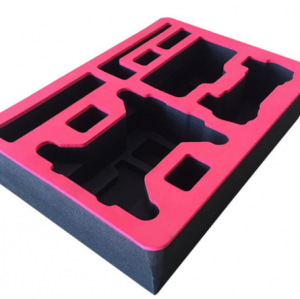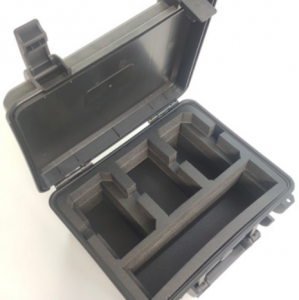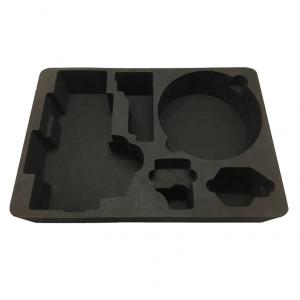The term “ESD XLPE Foam Cushion” refers to a type of foam designed to prevent electrostatic discharge (ESD) damage to sensitive products during transportation, storage, or handling. “XLPE” stands for Cross-Linked Polyethylene, which is a material known for its durability, cushioning properties, and resistance to static electricity. This foam is often used for protecting electronic components, medical devices, and other high-tech products that are vulnerable to static damage.
To summarize, ESD XLPE Foam Cushion can be translated as ESD Cross-Linked Polyethylene Foam Cushion.
Series 2: How about the material and characteristics of the ESD XLPE Foam Cushion?
Material:
ESD Foam Cushions are typically made from Cross-Linked Polyethylene (XLPE), a polyethylene material treated through a cross-linking process. Compared to regular polyethylene (PE), XLPE has higher density, compressive strength, and chemical resistance. Additionally, XLPE provides superior cushioning, anti-static properties, and durability, making it an ideal protective material for electronic products and medical devices.
ESD foam cushions often include dissipative agents or antistatic additives, giving the foam antistatic properties to effectively prevent damage from electrostatic buildup and discharge to sensitive products.
Characteristics:
· Anti-Static: One of the most important features of ESD foam cushions is their ability to prevent static generation and accumulation, especially for sensitive components such as electronic products, ICs, and PCBs. They dissipate static charges to prevent electrostatic discharge damage.
· Cushioning & Protection: With a robust foam structure, these cushions provide effective physical protection for sensitive equipment, absorbing and dispersing impacts during transport, storage, and handling.
· Durability & Compression Resistance: ESD foam cushions made of XLPE are highly durable, maintaining cushioning and antistatic performance over time and under high pressure, suitable for long-term storage and frequent transportation.
· Lightweight: These cushions are lightweight, reducing transport costs and not adding extra load in use. Their light nature allows for easy processing into various shapes and sizes for different packaging needs.
· Chemical Resistance: XLPE offers excellent chemical resistance, withstanding many common substances, particularly in medical and electronic fields.
· Temperature Resistance: ESD foam cushions maintain physical properties across a wide temperature range, suited for varied environmental conditions, especially where temperature fluctuations are significant.
· Customizability: The flexible foam structure allows for customization according to product needs. Foam can be cut into different shapes to provide optimal protection.
· Eco-friendly: Cross-Linked Polyethylene is typically recyclable, meeting environmental standards and reducing ecological impact. In special applications, non-toxic antistatic foam can be used to meet higher environmental and safety requirements.
Summary:
ESD foam cushions are critical protective materials in industries such as electronics, medical, automotive, and photovoltaic. The XLPE material offers outstanding antistatic, cushioning, and durability features, effectively protecting sensitive products from electrostatic and physical impacts.
Contact us today to experience the outstanding performance of our high-quality antistatic foam!
Company: Yufa Polymer Products Co., Ltd.
Email: info@yufapolymer.com
Website: www.yufapolymer.com
We look forward to working with you to protect high-tech products and embrace a safer, more efficient future!






















